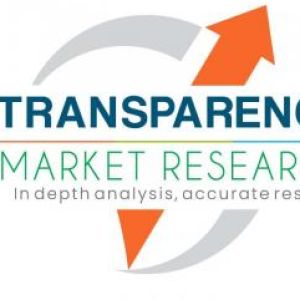Oleophilic Materials Market - Global Industry Analysis, Size, Share, Trends andPosted by Jayashri Tryambak Bhadane on August 13th, 2019 Oleophilic Materials: Introduction An oleophilic material is an entity which exhibits a higher affinity for oil than other solvents. The non-polar nature and ability to form cluster-like structures called micelles are the characteristic properties of oleophilic materials. Oleophilic materials are ideally suited to be engineered in formulations of cleaners, detergents, metal plates in printers, separators, and skimmers. Read Report Overview @ https://www.transparencymarketresearch.com/oleophilic-materials-market.html Oleophilic Materials Market: Segmentation The market for oleophilic materials can be segmented on the basis of raw material, application, function, and region. The market is subdivided on the basis of raw material into polypropylene, polyurethane, and aerogels. In terms of function, the market can be segmented into cleaning agents, separation agents, printing, and others. Oleophilic materials have historically been used in other applications such as skimmers to separate hydrocarbon oils and impurities. Based on application, the market for oleophilic materials can be segmented into oil recovery, detergents, coatings, and others. Based on region, the oleophilic materials market can be divided into North America, Europe, Asia Pacific, Latin America, and Middle East & Africa. Most of the key players in the industry are located in the North American region. Among them, oil spillage recovery is the key focused area. Oleophilic Materials Market: Dynamics The oleophilic materials market is in its incubation phase owing to global dynamics of low demand in terms of volume and low degree of market penetration by materials. Rapid increase in commissioning of crude oil producing operations in the Middle East in congregation to lower costs of manpower and availability of technology is driving the oleophilic materials market. The other historically dynamic North American and the Western European firms are also investing and commissioning their operations in previously untapped market further creating a demand for such materials. The industry has observed low overall growth in the last decade with increase in global oil and gas industries. Oil producing upstream companies and operators are also under pressure from governments and environmental activists to develop damage restraining and remediation protocols in case of oil spills. Recent oil spills have acted as catalysts to the industry with fines and lawsuits affecting the balance sheets of companies by billions of dollars. The application of oleophilic materials in combating damages from oil spills is likely to drive the market during the forecast period. However, absence of large-scale research and innovation over the years has hampered the oleophilic materials market. The recent decline in the prices of crude oil and further value addition in cost due to application of oleophilic materials in the operational regime is likely to hamper the market. Allocation of capital and resources in R&D is likely to increase market penetration and offer new opportunities to the oleophilic materials market in the near future.
Oleophilic Materials Market: Key Players Oleophilic materials has emerged as a niche, untapped segment of the chemical industry across the globe. Key players involved in the market include Miller Environmental Group, Seashell Technology LLC, and International Environmental Products. The report offers a comprehensive evaluation of the market. It does so via in-depth insights, understanding market evolution by tracking historical developments, and analyzing the present scenario and future projections based on optimistic and likely scenarios. Each research report serves as a repository of analysis and information for every facet of the market, including but not limited to: Regional markets, technology developments, types, applications, and the competitive landscape. The study is a source of reliable data on: · Key market segments and sub-segments · Evolving market trends and dynamics · Changing supply and demand scenarios · Quantifying market opportunities through market sizing and market forecasting · Tracking current trends/opportunities/challenges · Competitive insights · Opportunity mapping in terms of technological breakthroughs The regional analysis covers: · North America (U.S. and Canada) · Latin America (Mexico, Brazil, Peru, Chile, and others) · Western Europe (Germany, U.K., France, Spain, Italy, Nordic countries, Belgium, Netherlands, Luxembourg) · Eastern Europe (Poland, Russia) · Asia Pacific (China, India, Japan, ASEAN, Australia and New Zealand) · Middle East and Africa (GCC, Southern Africa, North Africa)
TMR estimates the market size of various sectors using a combination of available data on the number and revenue of companies within each sub-sector and tiers of companies. The basic components used to determine market size and forecast for a specific product area are not only limited to supply-side data, but are also related to demand, industry trends, and the economic outlook. All the above data points are utilized to generate a statistical model targeting the sector marketplace. More than 300 TMR analysts across the world integrate these elements into a framework to determine the subsector market size for a base year and then forecast growth within each market.
TMR regularly interviews technology and business professionals as an ongoing effort to track the latest developments within each sector. These continuous surveys are stratified by company size and industry segment and weighted to reflect the global market place. All data are collected on an ongoing effort through a structured questionnaire rolled over the web or conducted via telephones. This provides the TMR team opportunities to request for detailed question sets, complex skip patterns, and real-time calculations, which assists respondents in answering questions involving numbers and percentages. Respondents, who are interviewed as experts, are screened and qualified based on certain criteria in addition to their decision-making authority and the scope of activity within their organizations. Like it? Share it!More by this author |


